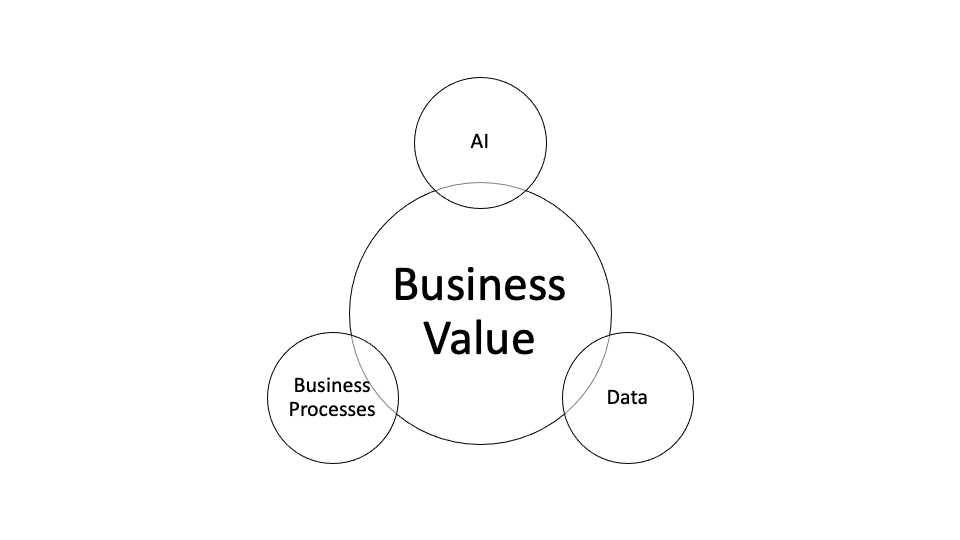From “An Insider’s Guide to Cloud Computing”
As we stated earlier, the concepts of AI, data, and analytics are tightly coupled within the cloud. Figure 4-10 depicts this relationship and the understanding that business value for analytics can only be created by connecting AI, business processes, and raw data.
AI can find patterns in the data as well as learn day to day, which provides even more AI knowledge about how to use the data. No matter if this is general business analytics, or how an AIOs (Artificial Intelligence [AI] Operations) tool will deal with operational data to learn how to resolve problems over time, the fact that we’re including AI means that the analytics system can learn ongoing. It does so from the data and applies that knowledge to find deeper understandings about what the data means for the business. Often, the business learns something about its data that becomes game-changing.
Figure 4-10: To find the true business value of cloud-based data analytics, we need to leverage a few key technologies that include the data itself that’s housed within a database, analyze how that data is provided to key business processes, and then determine how that data can teach key AI systems. All of this is interconnected to provide the core business value.
To find the true business value of cloud-based data analytics, we need to leverage a few key technologies that include the data itself that’s housed within a database, analyze how that data is provided to key business processes, and then determine how that data can teach key AI systems. All of this is interconnected to provide the core business value.
For instance, analytics could determine that an improved customer experience versus an improved product generates more real value. The system might forecast that certain improvements to the customer experience will return 15 times more than an equal investment in product improvements. Very few humans would connect those dots, but AI can help businesses identify and pursue opportunities to generate more business value.
Business processes are often overlooked as a consumer for analytics, but they play perhaps the most important role. Let’s say we support a core business process, such as a product sales process, and now we can embed analytics to allow this process to become more valuable for the business. For example, we add the ability to look at the sales history of a specific customer, understanding that this type of customer often closes after receiving a small discount on the price. The AI system can determine that the best target discount rate for this customer is 5 percent, and that this discount often results in an order quantity increase of three times the initial order. Building these analytics into the process, we’ll understand how much of a discount to provide to which customers for the highest chance of closing the sale right away, while still maintaining margins. This process can even be automated so that the system offers the discount without human intervention, which removes any latency caused by manually doing the discount procedure.




